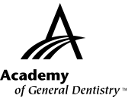|
Exercise No. 388
Subject Code: 754
Dentistry for the Medically Compromised
The 15 questions for this exercise are based on the article Dental surgical management of the patient with hemophilia on pages 14-17. This exercise was developed by Jean Carlson, DDS, FAGD, in association with the General Dentistry Self-Instruction committee.
|
Reading the article and successfully completing the exercise will enable you to:
- understand the types of hemophilia and bleeding disorders;
- identify clotting factors administered to patients with hemophilia; and
- recognize the impact of bleeding disorders on clinical dental procedures.
|

